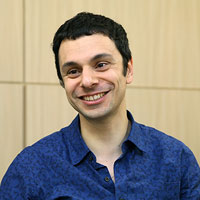View this article in another language
- 한국어
- English
- 日本語
- 中文
- العربية
- Español
- Français
- Deutsch
- Pусский
- Tiếng Việt
- Indonesian

By Tim Alper
In my first year in Korea back in 2007, the most confusing part of my week came every Sunday, the day when residents in my neighborhood had to take out the trash. This day was particularly confusing for me because I had only recently arrived from the U.K., where trash disposal was relatively simple. One would just put everything in a big green trash can once a week and leave it to be collected.
Separating trash in Britain was unheard of back then. Food and other waste all went into the same bin. Uber-conscientious citizens took empty glassware to bottle banks, often several kilometers away from their homes, but recycling really went no further than that.
In Korea, however, right from day one, I had to adjust myself to a rigidly adhered-to trash separation system. Most apartment complexes are dotted with numerous recycling points, with separate containers for cardboard and paper waste as well as for metals and bottles.
Disposing of plastic waste is a complicated matter for non-Koreans unused to separating trash so thoroughly. PET containers and the like – drink and yogurt bottles – go in one container, while plastic bags and bubble wrap go in another and polystyrene in yet another. When I lived in a smaller, three-five story villa, things were slightly simpler. I had to put all recyclables into a plastic bag, with non-recyclable waste going into a designated color-coded bag.
For non-Koreans, food waste disposal can be even tougher to master. Disposal services cost money, and again, depending on where you live, the payment method for such services often varies dramatically. In many cases, the total weight of an apartment block's combined food waste is billed to an administrative center, which simply divides the cost equally among residents.
Now, however, I find myself having to adapt to a new system that utilizes some nifty technological solutions. All food waste bins are now electronically locked and fitted with digital scales that residents use to weigh food waste. Once you’re done calculating, you use a rechargeable smart card to pay for the exact amount of waste being disposed of. Personally, I find this method helps me pay more heed to the amount of food waste I produce, as well as the costs involved with disposing of it.
And if you are, like me, interested in investigating how green technology is shaping the future, Korea's IT scene provides plenty of food for thought.
Electric vehicles of all shapes and sizes are starting to take over in modern Korea. Roving yogurt vendors once had to push heavy trolleys around their neighborhood beats. But most visitors to Korea will have noticed that in recent years, these same vendors have instead begun to whizz about on swanky, noiseless electric carts. The cart developers last year began mass producing two-seater electric cars. And the government now offers subsidies to electric car buyers, allowing people to pay as little as KRW 5 million for new models.
International automakers have teamed up with domestic companies to build single-seater quadricycle microcars. These vehicles can travel up to 100 km on a single charge, and owners can top up their batteries using 220V electrical outlets that are standard in Korean households. I can imagine that developments like these will probably revolutionize Korea's burgeoning delivery industry. Last year, a major fried chicken franchise agreed to purchase 1,000 of these innovative vehicles.
Roadside battery charging facilities – which can top up both microcars and much larger models – are starting to spring up all over the country. And in many parts of Seoul, you can ditch petrol-powered transportation in favor of electric scooters and pay online via smartphone apps. These allow urbanites in certain areas to jet around town, leaving their rides pretty much anywhere. Consequently, this boosts commuter convenience without producing exhaust fumes.
Green energy initiatives are on the rise, too. The government plans to have renewable energy account for 20 percent of the country's power generation by 2030, with older coal-powered plants being phased out altogether over the course of the next decade.
Breakthroughs in fuel cells, solar power, wind farms and energy storage are also increasingly commonplace. In February this year, marine authorities in Incheon pioneered a light-emitting buoy operating on a seawater-powered battery. Meanwhile, fishing crews across the country are re-equipping their nets with new solar-powered floats.
With recycling technology, greener transportation and clean energy on the rise, there is plenty to digest in Korea for both renewable energy advocates and tech geeks like me.
Tim Alper is a Seoul-based British writer and columnist who has lived in Korea since 2007.
Most popular
- Korea.net welcomes 2025 K-influencers, Honorary Reporters
- 2025 Honorary Reporter class pledges to spread 'real Korea' worldwide
- US urged to exempt tariffs on Korea in first '2+2' trade talks
- 'Gangnam Style,' 'Baby Shark' make YouTube's 2005-25 best list
- Korean culture festival in Cuba marks 1st year of bilateral ties
